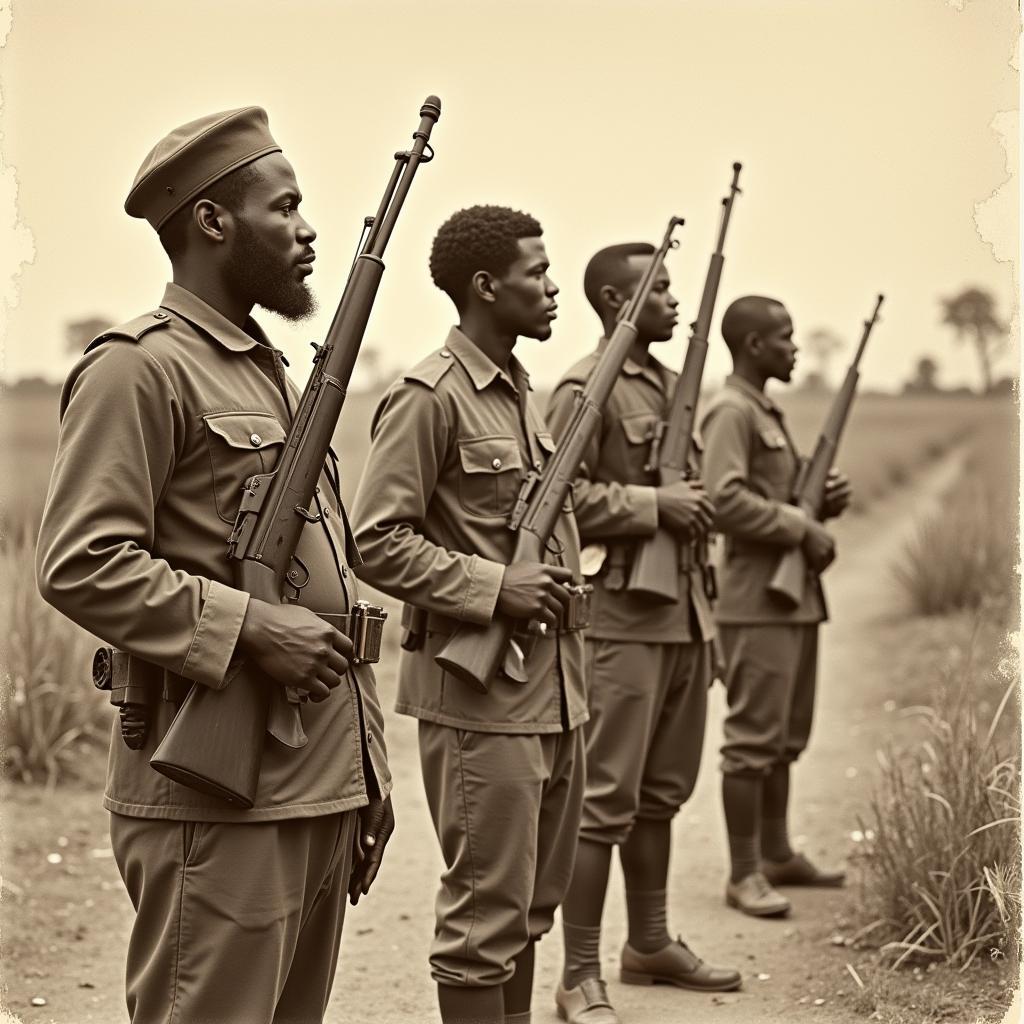Exploring the Vibrant World of African Kitenge Dress Designs
African Kitenge Dress Designs are a vibrant celebration of African culture, showcasing bold prints, dynamic colors, and diverse styles. From traditional ceremonies to modern fashion runways, kitenge fabric has become a powerful symbol of African identity and creativity, captivating fashion enthusiasts worldwide. This article delves into the rich history of kitenge, explores its modern interpretations, and guides you through the diverse world of African kitenge dress designs. After reading this article, you will understand the cultural significance and fashion versatility of kitenge, empowering you to choose the perfect design for any occasion.
A Journey Through Kitenge History
Kitenge fabric, also known as “chitenge” in some regions, has a fascinating history rooted in East Africa. Its origins trace back to the 19th century when brightly colored cotton cloths, often featuring intricate patterns and designs, were introduced through trade routes. The name “kitenge” is believed to be derived from the Swahili word “kitenga,” meaning “to tie,” referring to how these cloths were traditionally worn as wraps or head coverings. Today, exploring kitenge’s evolution in african clothing styles 2017 reveals fascinating details about their past and present.
From Traditional Wraps to Modern Masterpieces
Over time, kitenge evolved from simple wraps into versatile garments, adapting to the changing fashion landscape. The vibrant prints and colors, often depicting symbolic motifs or abstract patterns, have become a hallmark of African fashion. Kitenge’s affordability and adaptability further contributed to its widespread popularity, making it a staple in wardrobes across Africa and beyond.
African kitenge dress designs offer an incredible range of styles, catering to every taste and occasion. From elegant maxi dresses to chic off-the-shoulder designs, the possibilities are endless. The versatility of kitenge allows for seamless transitions from casual daytime wear to glamorous evening attire. Today, even african designs for men incorporates the unique kitenge prints, showcasing the fabric’s widespread appeal.
Unveiling the Magic of Kitenge Styles
What makes African kitenge dress designs truly special is their ability to blend tradition with contemporary fashion trends. Modern designers are constantly reinventing kitenge, incorporating innovative cuts, silhouettes, and embellishments. This fusion of old and new creates a unique aesthetic that resonates with a global audience.
Choosing the Perfect Kitenge Dress
With countless African kitenge dress designs available, finding the perfect one can be an exciting journey. Consider your body type, personal style, and the occasion when selecting your dress. Explore different cuts, necklines, and sleeve lengths to discover a design that flatters your figure and reflects your individual taste. Remember to choose colors and patterns that complement your complexion and personality. For expectant mothers, there are specifically designed african kitenge maternity dresses that combine comfort and style.
Kitenge Beyond Fashion: A Symbol of Culture and Identity
African kitenge dress designs transcend mere fashion; they represent a powerful connection to culture and heritage. The vibrant prints and colors often tell stories, reflecting the rich traditions and beliefs of different African communities. Wearing kitenge is not just about making a fashion statement; it’s about embracing and celebrating African identity. Have you considered using an african dresses app to explore various styles and designs?
Kitenge in the 21st Century: A Global Phenomenon
Kitenge’s influence has extended far beyond the borders of Africa, becoming a sought-after fabric in the global fashion scene. Designers from around the world are incorporating kitenge into their collections, further elevating its status as a symbol of cultural exchange and appreciation. The growing popularity of african fashion designers 2017 illustrates the increasing international interest in African textiles and designs.
In conclusion, African kitenge dress designs offer a unique blend of tradition, style, and cultural significance. From its humble beginnings as a simple wrap to its current status as a global fashion phenomenon, kitenge continues to inspire and empower. By embracing the vibrant world of kitenge, you not only adorn yourself with beautiful garments but also connect with the rich tapestry of African heritage.
FAQ
-
What is kitenge fabric made of?
Kitenge is typically made of cotton. -
How should I care for my kitenge dress?
Hand washing or gentle machine washing is recommended. -
Can I wear kitenge to a formal event?
Absolutely! Kitenge maxi dresses and tailored designs are perfect for formal occasions. -
Where can I buy authentic kitenge fabric?
You can find authentic kitenge fabric at African markets, specialty stores, and online retailers. -
What accessories complement kitenge dresses?
Wooden jewelry, beaded necklaces, and headwraps are great choices. -
Are there different types of kitenge fabric?
Yes, variations exist in terms of print, weight, and quality. -
How can I learn more about the history of kitenge?
Research online and explore books and articles on African textiles.
Common Scenarios and Questions
- Scenario: Attending a wedding. Question: What type of kitenge dress is appropriate for a wedding guest?
- Scenario: Traveling to Africa. Question: Where can I purchase kitenge fabric during my trip?
- Scenario: Designing my own kitenge dress. Question: Where can I find inspiration for unique kitenge designs?
Further Exploration
Explore other articles on our website about African fashion and culture. You can also learn more about specific design elements and styling tips.
Need Help?
For further assistance, please contact us at Phone: +255768904061, Email: [email protected] or visit us at Mbarali DC Mawindi, Kangaga, Tanzania. Our customer service team is available 24/7.
